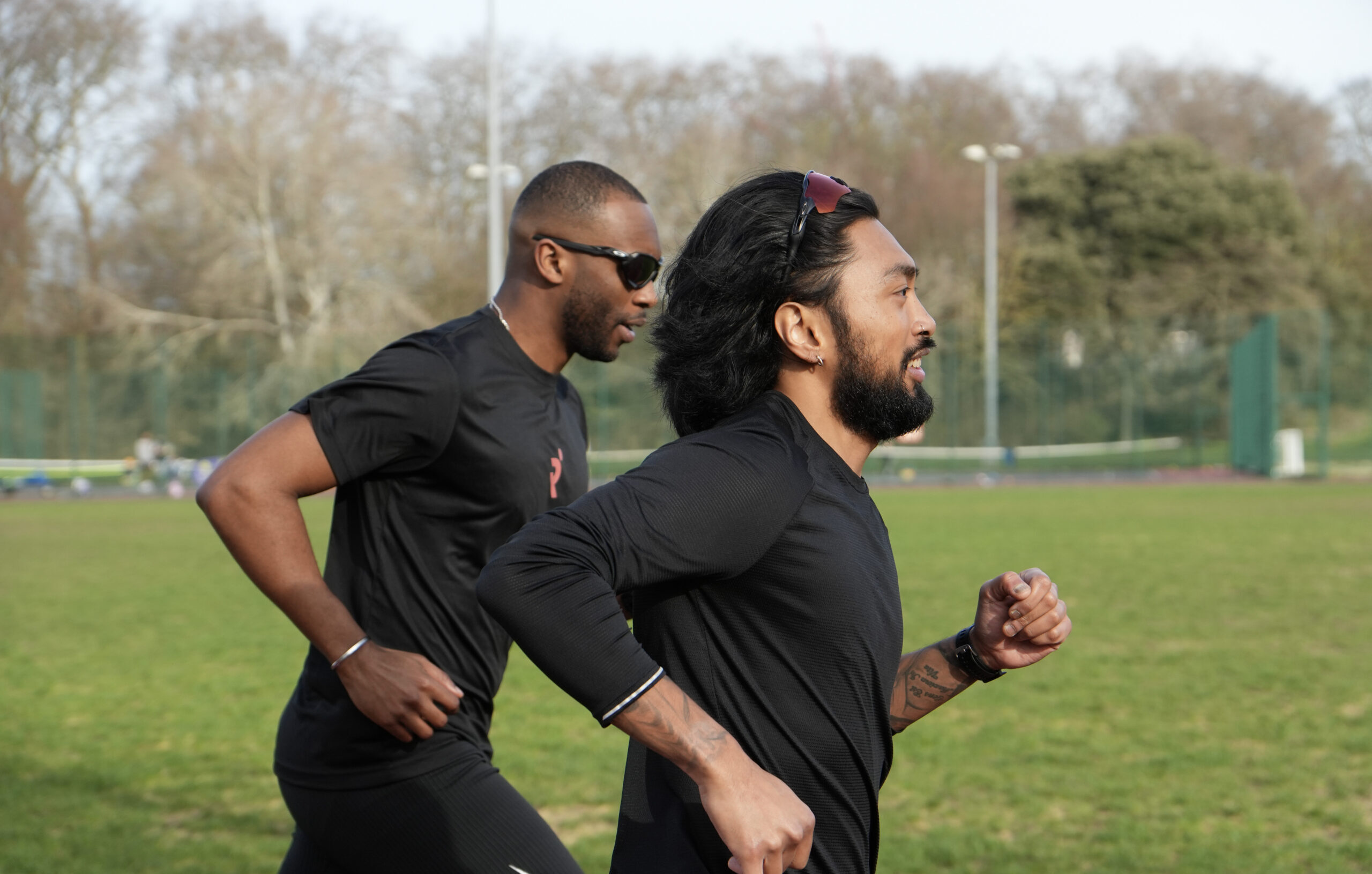HOW TO START RUNNING (AND NOT GET INJURED)
Are you wondering ‘How on earth do I start running’? as your trainers gather dust by the front door?
Whether you’re starting for the first time or returning after time off, discover how to build a routine that sticks and – crucially – is one that you enjoy and doesn’t result in injury.
From pitfalls to avoid to easy-to-action top tips, Runna has put together a handy list of ‘Do’s and Don’ts’ for beginners and those ready to make their comeback.
Let’s get going!

1. DO – START SMALL
While it may be tempting to just run for as long as possible, the best approach is to ‘start small’ and follow a structured strategy. For example, if you haven’t run a 5k before, use the Runna ‘New to Running’ plan to work up to this distance, increasing your stamina without risking injury.
Remember: Go easy when you first get started, as your body needs to get used to the activity and adapt to its demands. The ‘walk-run’ strategy is an effective strategy even for the most seasoned runners who have had some time off.

Running with a friend can make you more motivated and accountable.
2. DO – REMEMBER ‘DISTANCE FIRST’
The best way to get better at running is to build distance first – speed comes after. For example, you might aim to run 5km continuously, and then work on improving your pace (for example, through interval training).
In general, newbies shouldn’t worry about speed too much; the first challenge is to build stamina and confidence running for an extended period of time.

Remember: build distance first – speed comes after.
3. DO – EAT THE RIGHT FOOD
There is an overwhelming amount of information about what to eat for running.
To make life easier, aim to have an understanding of general ‘best practices’ when it comes to diet. For example, to avoid indigestion, eat your last full meal roughly 2 hours before heading out the door. If you need a snack closer to the time, eat fibrous, easy-to-digest foods (such as bananas or cereal bars).
After your run, you should re-fuel with a good mix of carbohydrates and proteins. Protein is key to recovery, as it helps to repair muscle. For more tips, read our ‘Fuelling Best Practices article here.
4. DO – MAKE IT FUN
How are you going to keep a consistent routine if you don’t enjoy your runs? You should look forward to training. Here are some ways to stay motivated and have fun out there:
- Bring a friend. Running with a friend is the perfect way to stay motivated and accountable. You’ll also get an extra blast of endorphins from having a good old natter!
- Change the scenery. Running in new places is rewarding and can shake up a predictable, everyday routine. Why not branch out to a new location – parkrun ‘tourism’ at weekends can be a great way to start.
- Celebrate your progress. Track your runs, set yourself challenges, and reward yourself for achieving them.
5. DON’T- SKIP THE WARM-UP OR COOL DOWN
Warming up before running sets you up for better performance and reduces chance of injury. Similarly, a cool down helps bring your heart rate down gradually and aids recovery.
A common mistake – aside from skipping both exercises altogether – is doing static stretch to warm up. A dynamic warm up, such as a light jog followed by ‘drills’ like lunges or heel kicks, is much better. This is because it brings up your heart rate gradually for higher intensity sports like running.
For a cool down, do a light jog or walk followed by static stretches to relax and improve blood flow to the muscles. Check out mobility and stretching exercises from Ben Parker at Runna below.
View this post on Instagram

6. DON’T – IGNORE DISCOMFORT OR SIGNS OF INJURY
As running is a high impact sport, it puts pressure on your muscles and joints, which, unless properly managed, can lead to injury. Never ignore pain or discomfort when you run, as your body is likely telling you to ease back or stop training before a full blown injury occurs.
Aside from resting and seeking medical advice, you can also do the following to prevent pain and injuries developing:
- Warm-up and cool down properly after every run, including stretching.
- Increase your training load gradually; no more than 10% increase of weekly mileage is recommended.
- Make sure your running shoes are suitable (go to a running shoe shop for a treadmill test to check you’re wearing the right pair for you).
- Do some strength training to target weak areas and especially the legs and core for good running form.

Increase your training load gradually (no more than 10% increase of weekly mileage).
7. DON’T – FORGET REST DAYS
Recovery time is crucial for every runner: do not to underestimate it.
Even if you’ve well and truly caught the ‘bug’ for the sport, get into the habit of taking rest days to allow your body to repair itself and come back stronger for your next run.
Rest can look like a total break from exercise (although gentle walks are always recommended) or cross-training activities such as swimming, cycling or even yoga.
We hope these tips give you a flying start to your running journey. For a little extra help, you can download 2 weeks of the Runna app for free by clicking the link below with the code MANCHESTERHALF.
Good luck!

